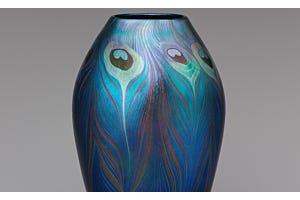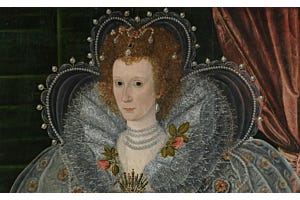Meet Designer Pin Affleck of Made in Tangier
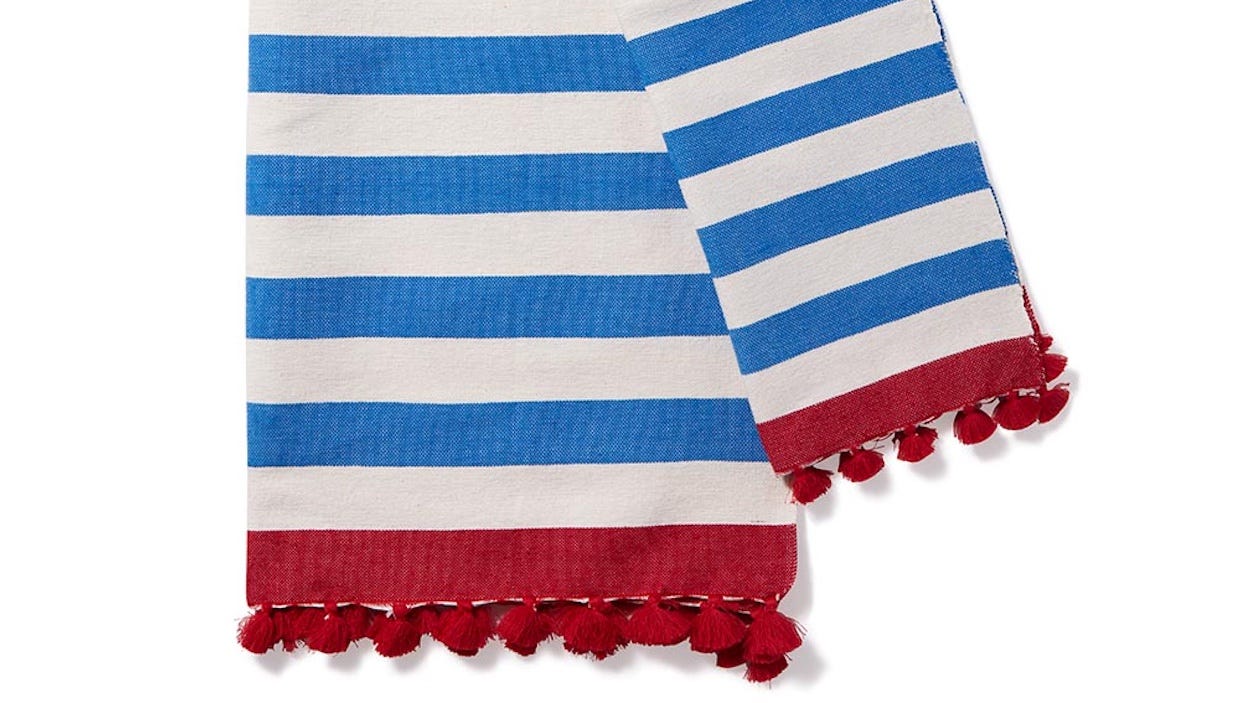
Concurrent with the 10th anniversary of the Museum's reimagined Islamic Wing—15 extraordinary galleries cohesively exhibited as Art of the Arab Lands, Turkey, Iran, Central Asia, and Later South Asia—The Met Store is delighted to present the Heirloom Project. This celebratory initiative commemorates The Met’s exceptional Islamic art collection and assists in the preservation of traditional craftsmanship by engaging with global artisans.
Moroccan spirit abounds at the heart of textile label Made in Tangier. Founder Pin Affleck provides a bespoke shopping experience that honors the design traditions of her beloved home, as well as her passion for entertaining and affinity for travel. With a keen eye for texture, color, and quality, she selects only the most luxurious hand-woven fabrics for made-to-order linens suited to every room. Each product is then thoughtfully photographed in her Tangier flat; but clients may likewise request custom designs suited to their singular visions.
Here, Affleck discusses the crucial mission of Made in Tangier, the beauty of regional artisanship, and her collaboration with the illustrious designer and Heirloom Project leader Madeline Weinrib to realize bespoke hammam towels evoking a detail from a dazzling 14th-century architectural tile attributed to present-day Uzbekistan in The Met collection.
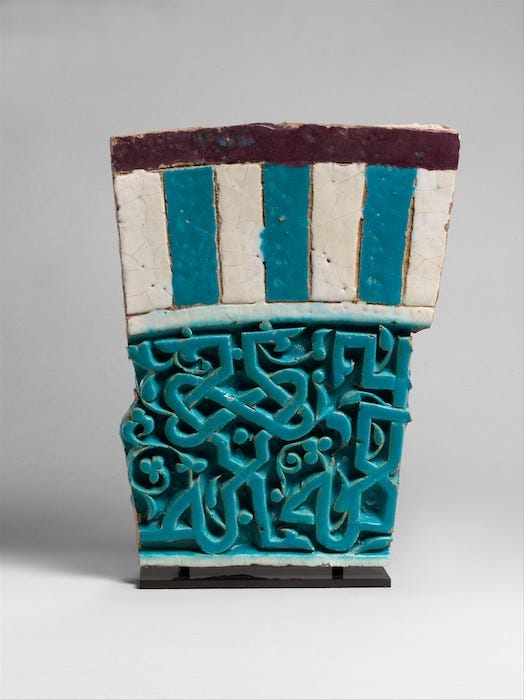

Tell us about yourself and your brand!
My desire to travel and explore the world began at an early age. As soon as I was old enough, I packed my bags and began my explorations. Over the years I have found myself living in a village in the Indian Himalayas; wandering through the bazaars of Delhi and Bombay; collating a collection of artifacts in a flat overlooking Topkapi Palace, Istanbul; swimming in the Nile in Upper Egypt; and picking grapes amongst Etruscan ruins in Tuscany. The textiles, history, architecture, houses, gardens, and people in each country I’ve ever visited have always fascinated me. I leave a little piece of my heart in each place I visit, and at this stage, that place is Tangier, Morocco.
When I first took my flat in downtown Tangier almost four years ago, the curtains were stitched from lengths of pure white cotton, and bedspreads were designed and woven for each bedroom by the weavers who are now an important part of my team, as were the hammam towels selected for the bathroom. The tablecloths and napkins were made to measure and to suit my love of entertaining.
Most ideas begin at my kitchen table surrounded by all the beautiful things that make my Tangier home special and uniquely “me,” from bedspreads to tablecloths, baskets to pottery. In launching Made in Tangier, a dream suddenly became a reality. All with a view of Spain from my kitchen balcony as the hustle and bustle of Tangier life unfolds on the streets below. In Morocco, anything is possible, and I have every hope that as the world opens up again, so will my ability to add to my collection.
My service is bespoke and unique to each individual’s specifications—we make everything from sketches or from my online store, and no order is too big or small. For those who want to stick to what I’ve already designed, they can simply jump online and buy my designs based on storyboards created in my Tangier kitchen and woven once ordered on the looms just a short walk from my flat. Anything bigger, bespoke, or personal is just an email away!
What’s your philosophy as a designer?
I have always loved all things “old.” I’m a great believer in tradition—there is no reason to reinvent the wheel when someone is already an expert in their field, and this is the case with our weavers in Tangier. They have inherited their incredible skill set from the men and women who came before them, and my job is to create designs that are relevant to the current day; inspired by sunsets and sunrises, architecture, nature, the ocean, and the often surreal situations that we find ourselves in throughout our daily lives.
The ethos of Made in Tangier is to support artisans and their craft whilst taking in our surroundings and culture, wherever we may be in the world. The past 18 months have not been easy for the artisans of Morocco, but through regular orders and a lot of persistence, I have managed to keep them very busy. This is not only satisfying from a production perspective, but also in the sense that by working together on a regular basis, families are cared for and households are fed. Everything produced by Made in Tangier is a team effort, with cultural differences to understand and each day presenting a different situation and hurdle to cross, so to speak. But most importantly, we each have a role to play in the making of beautiful items for homes around the world. In that making process we learn more about each other and our cultures. Therefore it is not just weaving, it is social cohesion and life lessons by the loom!
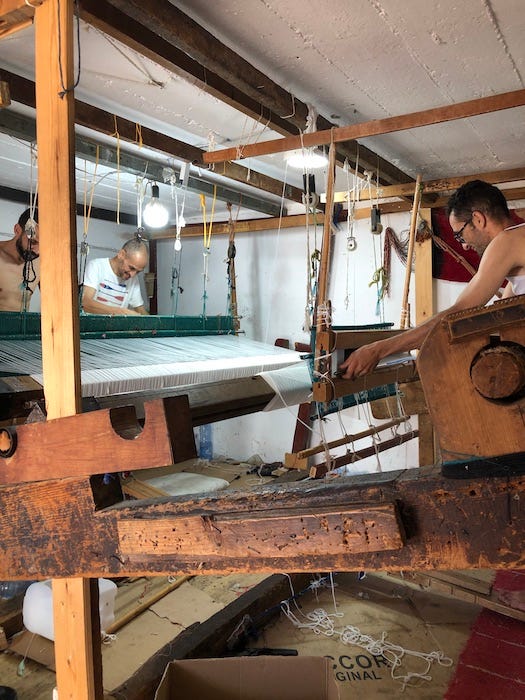

How does your philosophy factor into the items you produce?
Each time I walk into a secret Tangier garden or through an entrance to someone’s home, only to be arrested by the scent of orange blossom; or up to a roof terrace with sweeping views across the Strait of Gibraltar, where the Mediterranean Sea meets the Atlantic Ocean; or through the souk (marketplace), where fresh fruits and vegetables are stacked in colorful, artistic forms, my visual notebook fills with ideas for new pieces. Hammam towels are imagined from hot tin roofs and the colors of a mosque; a sunset over the Atlantic; bougainvillea draped over a whitewashed, sun-drenched wall. Morocco is a maker’s paradise.
When I take these ideas to the weavers, drawings and stories are translated by my Moroccan sidekick/ops manager/assistant extraordinaire who, over the past year-and-a-half since Made in Tangier’s inception, has learned to explain things in Darija (Moroccan Arabic) exactly as I imagine them in English (or terrible broken Darija). These ideas are woven like poetry in conversations through the workshop, and then literally on ancient looms.
My favorite place is on a stool beside the looms as the weavers weave to the beat of ancient love songs crackling in Arabic from even more ancient transistor radios. And then they break for prayer, just like that. Slippers slide off and down the ladder they climb. I stay put and send emails from my iPhone as the call to prayer sounds from the mosque down the passage.
Understanding each other and our different cultures is the essence of making things work. Social cohesion and the ability to accommodate all needs has always been important to me, and in Morocco, I have learned that while I never stop and I have a particular way of working (plan and routine, anyone?), those around me will pause and honor age-old traditions throughout the day, whether it be a meal with their family, a moment of prayer, or tea with friends. This is normal. There is no such thing as a quick bowl of leftovers from the office microwave on a deadline in this world! And that, I love. Leftovers, rushing, and deadlines were all once my reality in corporate Australia, but in my life here in Morocco, I have learned to appreciate that time spent in the moment is time well spent. Whilst I work to detailed lists and I keep a minute-by-minute daily plan in my notebook, I am also much better at accepting that just because that is my way (and that will never change), things happen in different ways here, and to understand each other and accommodate different work methods is a wonderful life lesson.
We always smile, and whilst sometimes my work day is frustrating or situations are misunderstood, the work is completed and deadlines are reached. It’s a culmination of culture, expectations, dreams, and ideas. That is the ethos and essence of Made in Tangier, and I feel so proud of this philosophy and the fact that in Morocco, this reality is easily realized.
Can you talk a bit about your contribution to the Heirloom Project?
Madeline [Weinrib] called me one night late in 2020 to discuss the Heirloom Project. It was one of those 'drop-the-phone' moments. I thought Madeline was simply calling to talk through the idea, and of course I was interested to hear of any project supporting artisans in the Islamic world—in particular, my beloved Morocco. It wasn’t until the very end of the call that I realized that Madeline was asking me to take part. The Heirloom Project just felt like the perfect match for Made in Tangier, and it’s these types of opportunities that make what I do really worthwhile and meaningful.
Everything at Made in Tangier is a team effort, and while I can draw up a design in minutes, the process to perfecting that piece takes a village once it goes into production. That village is the men and women whom I work with on a daily basis, and while they may not know much about The Met and most of my clients, they're the craftspeople who bring my dreams to life. We delivered the news that the “America Project” was on the cards, and samples needed to be made within days. Once samples were underway and colors were chosen—the right red, blue, and cream—we loaded the looms line by line in thousands of threads that form the warp of the weave, with the horizontal cotton (the stripes, in this case) forming the weft. Watching the samples come alive was both breathtaking and fulfilling. Those wiry arms shuttling color across the loom as the radio crackled in the corner, and smiles for days never left the faces of the men who were bringing this project to life.
The “America Project,” as it was now known, was shipped in samples a week or so later, and following months of discussions over email, we were overjoyed to learn that we’d been approved and the project was going ahead.
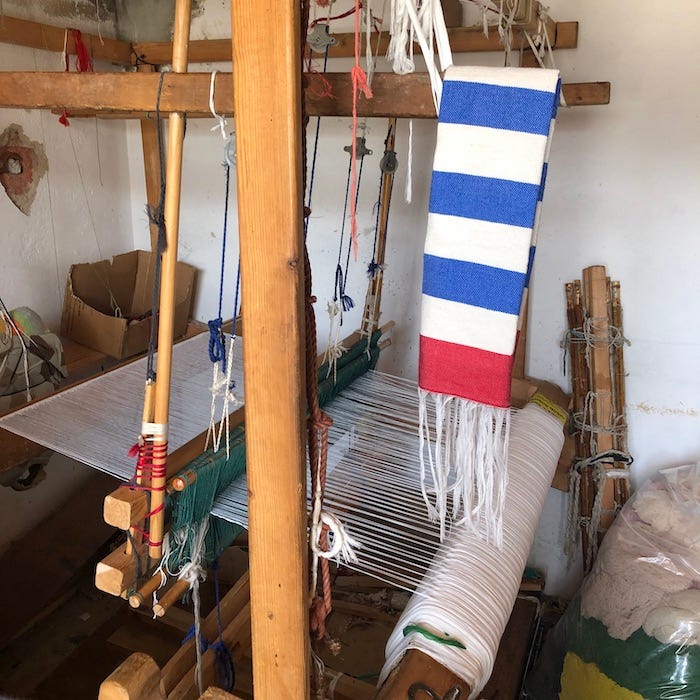

What excites you most about the Heirloom Project?
The Heirloom Project has been a beautiful challenge and an utter privilege to be a part of. There are so many stories to tell!
When I first took the concept of the Heirloom Project to the head of the cooperative I work alongside, he told me about his travels to America many years ago, along with his amazement at the sheer size of the museums there and the fact that he’d need to stay in the US for 100 years in order to be able to see it all. I showed him The Met on my phone, breathlessly explaining that this particular museum was ultra important, and the magnitude of this project, huge. It wasn’t until I explained that the Heirloom Project was a celebration of the reimagined Islamic Wing in its 10th year that we reached a point of mutual excitement.
The tale of the Heirloom Project was woven to our weavers on the looms, and I felt so proud when I heard it being explained. Pure joy. Islam is more than just a religion—it is the food prepared for each meal, the hospitality shown in peoples homes, breaking for prayer during daily work, the colors that have been repeated in artisanal wares over several hundreds of years. Islam is uniform in its traditions, but also relevant to the current day as technology and travel have opened up the world as we know it.
It was the holy month of Ramadan when we received the news that our samples had been approved and the project was going ahead. The team was fasting from dawn to dusk, but their enthusiasm didn’t wane—it increased. Mohamed, one of our best weavers, told me one day as his arms shuttled red, blue, and white cotton across the loom, that his dream was to join the US military. He would do anything for America!
Mohamed is about 60 years old, and his other obsession is New York. When asked if he’d been there, he replied, “Many times, of course.” Mohamed has a wonderful imagination and he has never actually left Morocco. But each time I went to inspect his work (we gave him the whole project, supported by lovely Hassan who weaves at a slightly quicker pace on the other side of the courtyard), he’d stand up straight, saluting and saying, “Yes, sir!”
At the end of the weaving process, just as the last pieces were coming off the loom, Mohamed could be found drinking mint tea and watching American news channels on a little telephone under his loom with the translation in Arabic running across the bottom of the screen. Through the Heirloom Project, Mohamed’s talent was not only fully realized, but so was his own American dream.
I’ve spoken to Mohamed about his beautiful weavings being hung on the backs of doors and on hooks in American bathrooms. This is what excites me, because I know it excites him greatly. The process of making, and the end product being loved by its new owner as much as it was woven with love in Morocco by Mohamed (supported by Hassan), and the level of care given to each handwoven item is a beautiful piece of storytelling.
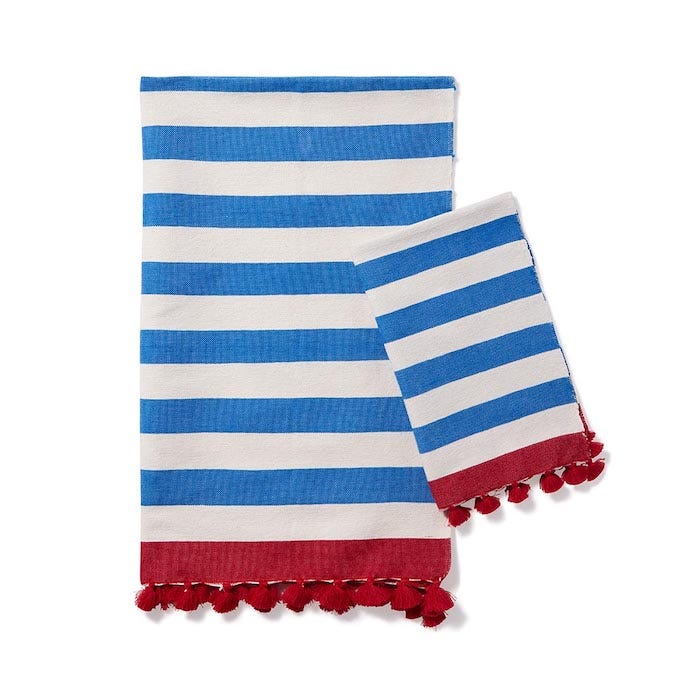

Is there anything in particular that you hope the public will learn from or appreciate about this initiative?
There is so much potential in this initiative. In a fast-paced world where things are made at the speed of light in factories and for little money, I feel a great deal of pride that during this process, and throughout every project we work on for Made in Tangier, talented human hands are behind each handwoven piece.
While I aim for perfection, I also have to remember that these people are not machines—they are artisan weavers and their strength comes from food, prayer, family, and friends. In my basket I always carry a measuring tape, at least 20 pens, a notebook with each day timed and reported. I buy lunch for our team and endless bottles of their favorite soft drink. My role is to be grateful, patient, and kind. If there is a problem, I am the one who has to explain it to my translator and together we work on messaging that will keep our team happy. You can’t reboot a human as you would a machine—humanity and care see beautiful outcomes. I am also responsible for all quality control, and if I send something back because of a slight imperfection, I need to be prepared for what may unfold. This way of working is highly personal and sometimes emotional.
For the public to understand the pure human element behind this initiative, the absence of machines, and the joy that the work brings to the men and women behind each piece is a great first step. It is also about sustaining our artisan weavers well into the future. To see their craft replaced by machines would be a sad day in history.
Each piece in this collection features little red pom-poms. A woman named Latifa handmade each pom-pom and sewed them onto the towels with her own hands. All 200 pieces. I sat with Latifa throughout much of the making process and we spoke about the importance of her religion, her family, and what this project meant to her. The care that Latifa put into each piece is immeasurable, and the friendship we formed throughout this process, during which she smiled at all times, is one I’ll always treasure.
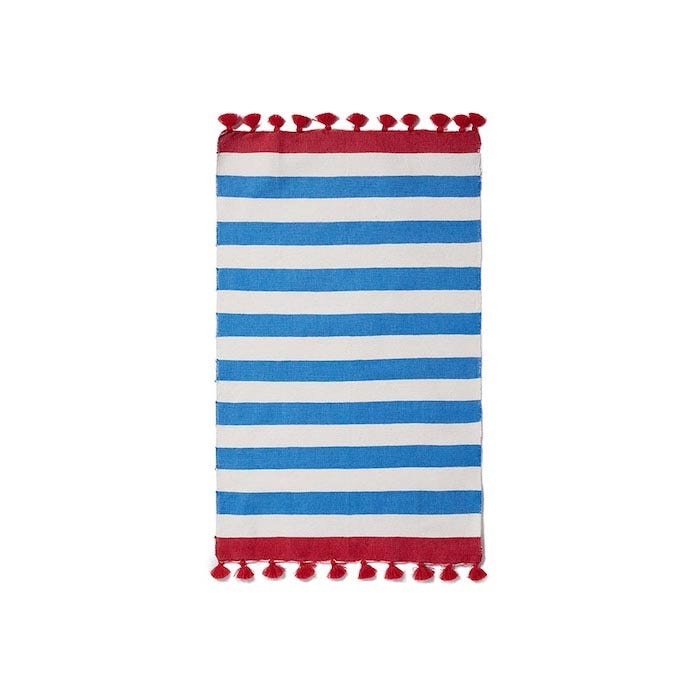

Where else do you typically derive creative inspiration from?
I am inspired by so many places and people, and one of my great passions is writing. Each day when I return home from dusty meetings by the loom, or to faraway workshops where I’ve found a master embroiderer, or from a magical drive home along the Atlantic Ocean at sunset, I write notes about each experience and they, too, become weavings! Stories told over the lunch or dinner table are also entered into my notebook: history, color, and personal experiences suddenly come alive on the loom. And then there are the people who write to me, asking about my life in Morocco and what inspires me. I have written storyboards for them too, and from there we create magic in bespoke pieces just for them. I am grateful for technology in these times of COVID, and I am constantly inspired by people’s travels and experiences shared online. And then there are the wonderful experiences that I’ve had in my own travels, and the people I’ve met along the way.
It’s our differences that inspire me. Or a reel of cotton lying on a dusty floor. A bird swooping across the weaving courtyard as the call to prayer sounds in the distance. There is so much to take in. For that, I remain truly grateful.
What's next for you?
Made in Tangier has gone from strength to strength. What began as a small business idea to make beautiful textiles for friends around the world has now become something that I could never have imagined. My great wish is that this will continue, and those happy, smiling faces will continue to weave as we take bigger steps into the future. In a time where I have been separated from my family and friends in Australia, I feel very grateful for my weaving family in Morocco.




